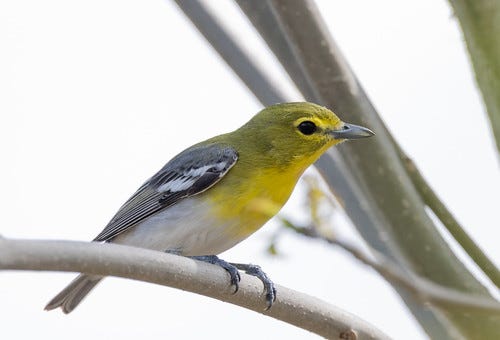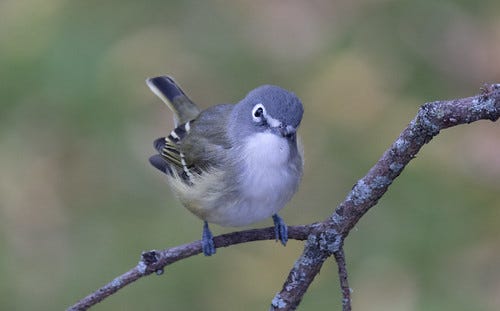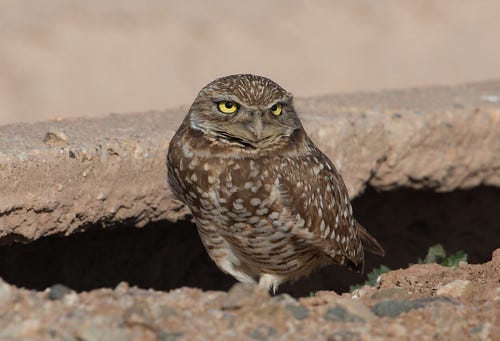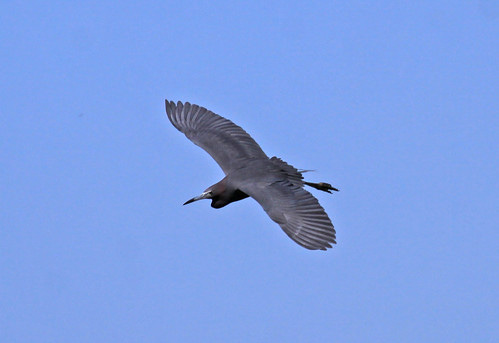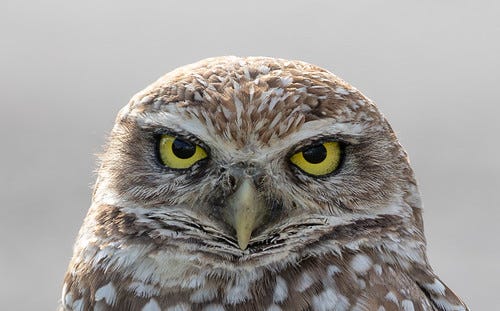The Value of eBird, Part I
A game changer for Rare Bird Alerts
(Listen to the June 26 radio version here.)
In November 1979, I saw a Yellow-billed Loon on Lake Mendota in Madison, Wisconsin. Yellow-billed Loons breed along the Arctic Ocean and winter in northern waters where they are seldom seen from land except along coasts. In 1979, there had been virtually no credible sightings anywhere in the Inland Lower-48, and I didn’t have a camera to photograph it.
Frustratingly, at that time the only rare bird hotlines in Wisconsin were tape-recorded messages on answering machines. We had to call the number to leave information about our sightings or to get information about rarities other people had found, and because these messages were normally updated weekly, many of the birds on a given report had flown away days before the update. The Wisconsin hotline was a toll call from Madison, so I couldn’t afford to call it much anyway.
Some of us called friends in our local birding circles when we saw a rarity, but before cell phones, that was tricky to do until we got home. When I saw the loon, the only birding friend whose number I knew was at work, but I wasn’t near a phone anyway. That night I called several friends, but the bird was never refound.
Fortunately, one or two birders I didn’t know chanced upon the same bird the day I saw it so there was some corroboration, but because it was such an exceptional first state record, after consultation with Yellow-billed Loon experts, the Wisconsin records committee called it a “hypothetical hypothetical.” If only I’d been able to get the word out as soon as I saw it, other birders, maybe including one or two with cameras, could have provided more solid documentation.
The very next month, on the Christmas Bird Count, my CBC team partner told me that a friend of his, a very experienced birder, had seen a Yellow-throated Vireo earlier that week at the Arboretum, and we needed to search the Ho-Nee-Um in case it was still around. As common as Yellow-throated Vireos are in Wisconsin during the breeding season, I was skeptical—they winter in Cuba and from Central through northern South America, but nowhere in the United States.
The previous winter, Russ and I had spent a week in South Texas where both Solitary Vireo (now called Blue-headed) and White-eyed Vireo were abundant. I figured either of them would be more likely than a Yellow-throated. Bill laughed when I mentioned White-eyed, which is extremely rare in Wisconsin even during the breeding season. I agreed that Solitary would be be much more likely, but no matter what it was, any vireo in Wisconsin in winter needed to be thoroughly documented.
We both got a glimpse of a vireo silhouette and then a good look at the back half at the same moment. Yellow flanks instantly excluded Yellow-throated, whose yellow is all on the forward half. Bill said that was enough to prove it was a Solitary and wanted to move on so we’d have enough time to cover our whole area. But I was confused about how his friend could have mistaken a Solitary Vireo for Yellow-throated because Solitaries don’t have any yellow near their faces and have striking white spectacles. White-eyed Vireos have yellow spectacles paler but a bit similar to those of Yellow-throated Vireos. I said I wouldn’t be comfortable until we got better looks. He’d been birding several decades longer than me and was the count compiler not just for Madison but for the whole state, but his dismissiveness made me feel prickly so I wouldn’t budge.
So we kept searching until Bill got a quick glimpse and said it was definitely a Solitary, only with some kind of eye deformity. Then the bird flitted out in the open where we both got splendid looks at a perfect White-eyed Vireo. Sometimes it takes a village to identify a rare bird.
Had Bill’s friend been the only one to see it, he’d have documented it as a Yellow-throated Vireo. Had Bill been the only one to see it on the CBC, he’d have either corroborated Yellow-throated or misidentified it as Solitary. I wished other birders had heard about it when it first appeared for two reasons: any confusion about its identity would have been erased before the Christmas Bird Count, and also I wanted other people to get to enjoy this unique December record. By the next day it had disappeared.
Hotlines and phone trees were not only slow ways of communicating rare birds—they were also exclusive, because birders had to be within the same circle of friends to hear about the good stuff while it might still be around. By the 90s, well-to-do birders doing Big Years or trying to get their life lists up to 600 or 700 could pay to get instant updates about continental rarities on a service called the NARBA (North American Rare Bird Alert) hotline. But even that couldn’t include rarities that unconnected birders saw and planned to document for their state’s seasonal reports but hadn’t reported to birdwatching hotlines.
On the morning of May 31, 1997, a Burrowing Owl turned up in Duluth at Erie Pier. That happened to be the day a lot of us were out doing a Big Day as part of Hawk Ridge’s annual Birdathon. Big Days tend to be rather competitive, but the people who found that owl—the only one ever seen in St. Louis County even today—wanted to share this amazing bird, so they drove up and down popular birding roads at the Sax-Zim Bog trying to alert as many of us as possible. That generosity took time from their own birding, and now I can’t even remember who tracked us down. (If you know, or if it was you, please let us know in the comments or email me!)
The Cornell Lab of Ornithology’s eBird changed everything. For example, on Sunday, May 15, 2016, a Little Blue Heron flew over when I was birding alone at the Western Waterfront Trail in Duluth. It disappeared too quickly for me to get photos, and though I’m very familiar with the species in Florida, it doesn’t belong here in Duluth.
This was a Sunday at the peak of spring migration when virtually all birders are out birding, so if this had happened before cell phones, I wouldn’t have been able to reach anyone till that night. And most recorded rare bird alerts were updated before the weekend, so word wouldn’t have gone out for several days.
But as it happened, the moment I saw it, I reported it on eBird. I had to get home, but within half an hour, three other birders arrived, found it, and got great photos. The bird stuck around for a few days longer, so a lot more people got to see it, too.
Thanks to eBird, a lot of us got to see a Barn Owl in St. Louis County on January 12, 2020. I’d written a book about all of Minnesota’s owls, Twelve Owls, and thanks to both eBird and the extreme generosity of those birders back in 1997 telling me about the Burrowing Owl, I’m lucky enough to have seen all 12 owls not just in the state but in St. Louis County.
Getting word out instantly about rare sightings is only a tiny fraction of what eBird does for us birders. Next time I’ll talk about how it helps us keep track of all the birds we see.




